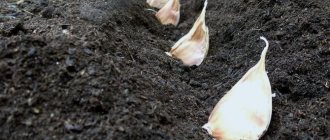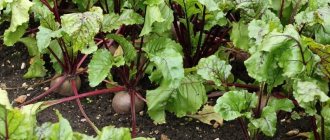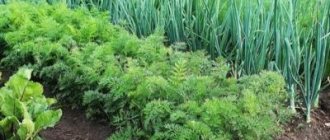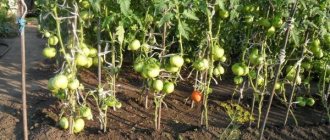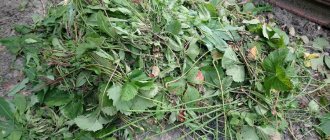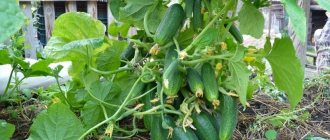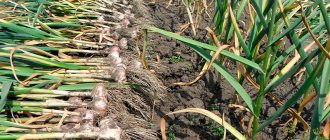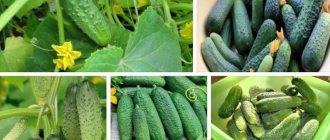Is it possible to grow cucumbers constantly in one place?
Discussions about places to grow pickling crops never cease. If you listen to the arguments of the disputants, then everyone turns out to be right. However, according to the rules of agricultural technology, long-term planting of one crop in a permanent place is prohibited.
Cucumber is no exception, but there are still times when there is simply no other place. There is a way out of this difficult situation: fertilizers and green manure come to the rescue.
Cucumbers extract potassium and nitrogen from the soil, leaving behind characteristic pests and disease accumulation. Each subsequent planting depletes the land more and more. Starvation, disease, and pests are not the best companions for large harvests. Therefore, you should not be surprised that all the color and ovaries from the plant simply fall off.
Of course, systematic application of fertilizers can temporarily support plants, but this will not last indefinitely.
Sometimes gardeners replace the top layer of soil in a greenhouse. This is a rather labor-intensive process, after which it is necessary to disinfect both the soil and the greenhouse itself.
The cheapest way out of the situation when you have to plant the same beds with cucumbers again is to sow green manure. They restore and clean the soil, neutralizing harmful substances left by pumpkin plants.
Green manure is sown at the end of summer and mowed in October. Next, the mow is dug up along with the roots. The most successful green manure mixture is oats and vetch.
example of sowing green manure plants
Preparing the soil for sowing cucumbers
The best soils for cucumbers are sandy loam, light or medium loam, well seasoned with organic and mineral fertilizers. Areas with close groundwater levels and high pH levels (above 7.6) are unsuitable. Cucumbers need a slightly acidic or neutral soil reaction (6.5-7.4).
Soil preparation for sowing cucumbers is carried out taking into account its type, degree of infestation and type of predecessor. In autumn, basic tillage should be carried out to a depth of 25-30 cm.
Pre-sowing treatment: harrowing to a depth of 4-5 cm in one or two tracks depending on the condition of the site, cultivation to a depth of 10-12 cm, pre-sowing cultivation to a depth of 4-5 cm.
The first year - cucumbers, but what about the second?
The root system of cucumbers is located in the upper soil layers. Constant digging only moves the soil from the lower to the upper layers, but the culture again impoverishes it. Over time, the soil is completely depleted.
To prevent this process, other crops with a more powerful root system are planted in place of cucumbers. They are able to partially restore soil balance.
In open beds
For open ground, plantings from root crops are suitable:
- Potato;
- Beet;
- Radish;
- Carrot;
- Turnip.
Garlic, celery, onions, and tomatoes will produce a good harvest. Legumes perfectly increase soil fertility, saturating it and preparing it for corn, tomatoes, peppers, and zucchini.
As for cabbage, it is advisable to allocate a different place for it. After cucumbers, cabbage seedlings will significantly deplete the soil. It will be extremely difficult to revive the beds.
In greenhouses
If open soils have a chance to recover due to the contiguity of crops, then greenhouse soil is completely isolated and its fertility depends only on plantings and fertilizers.
Having removed almost all the nitrogen from the soil, cucumbers saturate it with phenolic compounds. Therefore, after the snack vegetable, you need to plant crops that develop in the ground or with developed roots:
- Peppers;
- Eggplant;
- Parsnip;
- Early potatoes;
- Root parsley;
- Celery.
These vegetables are not afraid of harmful compounds left behind by cucumbers. To heal the soil, after harvesting the cucumber tops, white mustard is planted as green manure. When its shoots rise above the ground, they begin digging. Next, the beds are covered until spring with black covering material or film.
Why you need to alternate vegetable crops
Every experienced summer gardener knows that different crops take different nutrients from the soil and in different quantities. If you plant cucumbers in one place for at least two years in a row, this will lead to soil depletion. The soil will lose its fertile properties specifically for cucumbers. But if you plant a new crop next year, these vegetables will do just fine.
It is important to know that some vegetables are unable to take root in the neighborhood. It is also important to alternate crops that have different soil requirements.
Attention! An important rule of crop rotation: do not plant one crop in the same bed for several seasons in a row. Therefore, you cannot plant cucumbers after cucumbers.
After what crops should cucumbers be planted?
If you take into account all the recommendations and norms of crop rotation, then planting cucumbers in their original place is possible no earlier than after 3-4 years. This takes into account the ability of plants to both absorb nutrition from the soil and enrich it. Since a green vegetable actively consumes nitrogen, its predecessors must have the ability to saturate the soil with this substance.
Predecessors of open ground
In the garden, cucumber should be grown after legumes, since they enrich the beds with nitrogen. After harvesting peas or beans, you should not rush to throw away the stems. They are crushed and dug up along with the soil. Legume stems that have rotted over the winter will be an excellent source of nitrogen for cucumbers.
You can grow a snack vegetable after onions and garlic. In their beds, they eliminate all harmful microflora, thanks to their bactericidal properties.
Cucumbers feel good after carrots, beets and potatoes.
Greenhouse predecessors
Experienced gardeners have noticed that the yield of cucumbers increases after planting them in places after cruciferous vegetables. These are mainly different varieties of cabbage. But after harvesting the early cabbage, you can also have time to plant cucumbers. Cruciferous plants loosen the soil very well, which is important for the surface roots of cucumbers.
Nightshades are also good predecessors. They disinfect the soil well. In addition, when growing peppers and tomatoes, the upper layers of the soil rest, which is also beneficial for cucumbers.
Green manure to help
What should gardeners who are engaged exclusively in growing cucumbers for sale do? They do not have the opportunity to change crops and season after season they deal only with cucumbers. In this case, you need to pay due attention to improving the health of the soil.
Rules for planting cucumbers after cucumbers:
- After harvesting cucumbers, sow your plantation or greenhouse with green manure. In other words – green “fertilizers”. This is a group of plants that restore the rich composition of the soil. During their life activity, they release large amounts of nitrogen into the soil, inhibit the growth of weeds, and reduce the number of pests living in the substrate. Green manure also improves the structure of the soil. Their dead roots create a natural soil aeration system. The best green manures are: cereals, mustard, radish, alfalfa, clover.
- Green manure does not need to be removed from the site. Wait for their natural death with the arrival of cold weather and cultivate the land.
- In spring, be sure to add compost to the soil. After this, you can plant cucumbers again.
To increase the yield of cucumbers when constantly planted in one place, green manures (plants that are grown so that after them the soil can be “renewed”) are increasingly used. They are of several types:
- Cruciferous plants are pest protectors, weed fighters, soil sanitizers (white mustard, rapeseed, rapeseed, oilseed radish).
- Cereals - destruction of weeds (oats, wheat, rye, Sudanese grass, fescue).
- Legumes are nitrogen suppliers (peas, clover, chickpeas, soybeans, lentils, beans, vetch, lupine, sweet clover).
In greenhouses, where there is practically no crop rotation, phacelia, white mustard, rapeseed, alfalfa, and vetch are increasingly being planted.
Work on sowing plants is carried out both in early spring and in autumn, after harvesting.
We suggest you read: How to properly freeze cauliflower for the winter
Using green manure, important problems are solved:
- saturation of the soil with nitrogen and carbon dioxide;
- slowing down weed growth;
- fight against wireworms, nematodes, codling moths;
- increasing soil permeability.
30 days after sowing (to avoid germination), green manure is mowed and incorporated into the soil, or used as a mulching material. Both are useful for the active growth of cucumber seedlings.
Table of crop rotation of vegetables on the site
Having harvested the harvest, gardeners begin to plan future plantings in advance. They do all this taking into account the crop rotation table - an indisputable point of any agricultural technology.
Perfect rotation in a small greenhouse space is quite problematic. Of course, you can install 4 greenhouses and change the place where the cucumbers are planted every year, but such an expensive option is only suitable for a few.
Also, if you have enough finances, you can suggest annual soil replacement. The best option for all segments of the population is only planting green manure, or the sequence of growing crops.
| Excellent predecessors of cucumber | Corn, tomatoes, potatoes, peas, onions, cabbage, beans, beans |
| Good predecessors | Greens, beets |
| Invalid | Pumpkin, zucchini, squash, cucumbers, melons, watermelons |
| What to plant after cucumbers | Greens, beets, legumes, garlic, eggplants, potatoes, onions, peppers, tomatoes |
About changing cultures
Almost all crops can be grown in one place for about 3-4 years, then a group of plants should be replaced with another. For cucumbers, the ideal predecessors are early white cabbage or cauliflower. Cucumbers demonstrate good fruiting performance when planted in former growing areas of potatoes, peas, beets and tomatoes.
Although disputes over the proximity of tomatoes and cucumbers have been going on among gardeners for many years: some express the opinion that this is an ideal combination of crops, others talk about their complete incompatibility. Each summer resident will have to resolve this dilemma from his own experience.
Most likely, the crops do not conflict at the allelopathic level (they do not affect development with their root and leaf secretions), they only require different watering regimes - cucumbers are more moisture-loving than tomatoes.
Lemon balm: beneficial properties and contraindications
Is it possible to plant cucumbers before and after tomatoes?
Despite the affirmative answer from experts regarding this issue, summer residents continue to challenge it again and again. Tomatoes are often planted before and after cucumbers. Gardeners often use these two crops interchangeably, especially in greenhouses.
Since the affiliation of these vegetables is different, they do not have common diseases. Pumpkin crops love fresh organic matter, but by the time it rots, the cucumbers will have time to leave their beds. Over the winter, the fertilizer will enrich the soil, making it nutritious for tomatoes.
After tomatoes, cucumbers can be grown completely calmly. They will not get sick with late blight, and as for the quality of the soil, it can be enriched with humus or compost.
If it is not possible to alternate
Not every gardener can boast of a large plot of land where he can freely expand, engaging in systematic crop rotation. Most people use 6 acres (and sometimes even less), where they want to fit everything in at once. In such conditions, it is difficult to alternate vegetable crops every year, so you have to grow cucumbers in one bed for several years or plant them after zucchini, melons, etc.
It is allowed to keep one crop without relocation in the same area of the garden, but then it is advisable to create suitable conditions for this.
- After harvesting pumpkin crops, the soil in the garden should immediately be fed with organic matter (manure, compost, humus) to enrich the depleted substrate.
- Autumn digging of the bed to the full depth of a shovel is required - this will destroy the nesting places of pumpkin crop pests.
- In order to avoid the development of diseases, in the spring you should begin to preventively treat the beds with antibacterial compounds and carry out the fight with folk remedies throughout the entire growing season.
- To increase the yield, cucumbers must be fed - during budding, mineral and organic fertilizers are used, and during the fruiting period it is better to use nitrogen-potassium fertilizers.
However, even these measures may not be effective if cucumbers are regularly planted in the same place. The maximum period that allows vegetable bushes to develop well and produce good harvests is 3 years. Then it is advisable to remember the rules of crop rotation and relocate crops.
So, having become the owner of a summer cottage, you should first study the features of growing vegetables and other crops, so that you can then enjoy a good harvest, and not complain about unsuccessful attempts to grow something.
Cucumbers are a demanding crop that prefers comfortable conditions. If you develop the right strategy for growing this representative of pumpkin plants, taking into account mandatory crop rotation, you can not only provide your family with summer salads, but also make large preparations for the winter.
Very bad predecessors of cucumbers
Since planting plants of the same type negatively affects the soil, as for the cucumber, it is not planted after its relatives:
- Melons;
- Zucchini;
- Zucchini;
- Watermelons;
- Patissons;
- Pumpkins.
In addition to common preferences for microelements, this family also has common diseases and pests. Once in the soil, the bacteria receive the same crops at their disposal the following year and begin to actively multiply. The same applies to the pest.
Which beds are better not to use?
It was said above that when alternating crops, you should not use plants of the same type. Cucumbers belong to the pumpkin family, so all representatives of this family - pumpkins, zucchini, zucchini, squash, melons, watermelons - are undesirable predecessors. There are several arguments against it.
- If pumpkin plants were sick or were attacked by pests last year, then cucumbers have a risk of experiencing these problems themselves. Larvae of harmful insects and pathogenic microbes that are dangerous for this group of vegetables may remain in the ground.
- Sometimes it is difficult to find areas with low acidity for pumpkin plants, so you have to neutralize the existing soil by liming. If you subject the bed to such a procedure every year, then alkali will accumulate in the soil and in large quantities will only interfere with the development of the crop.
- The roots of pumpkin plants “suck” microelements from the soil that are necessary for development, thereby depleting the soil. Cucumbers will not develop in such a bed, but this is not a hindrance for weeds, and they can clog weak cucumber sprouts with their active growth.
Pumpkin crops are bad predecessors for their own kind, but after them other vegetables (nightshades, root vegetables, tubers, onions, garlic, herbs) develop well. This is facilitated by the influence of the root system on the looseness of the soil.
Who to choose as neighbors to cucumbers
If you take into account all the capabilities and characteristics of plants, then they can be grown in pairs. Good neighbors will help you cope with pests and diseases. They will not compete for the sun and microelements.
Of the spices, only dill can withstand its cucumber neighbor. But between salads and potatoes, it is advisable to plant peas, beets, and radishes.
Tomatoes grow well before and after greens, but they don’t get along together. And there are good reasons for this:
- They need different microclimatic conditions;
- Watering is strictly individual;
- Overgrown tomato bushes will inhibit the green vegetable.
Cucumber gets along well with corn, as it protects it from the winds and serves as a support. Garlic, as a natural antiseptic, helps cope with diseases. Spinach salad protects cucumbers from overheating, and dill helps increase yield.
Eggplant and peppers are suitable companions for greens. They are grown in garden beds and greenhouses. You only need to guide the cucumber vines so that they do not drown out their neighbors. Powerful sunflower stems perfectly support cucumbers, acting as supports.
Planting cucumbers with seeds in the ground
Sowing cucumbers with seeds directly into the garden bed is no different from sowing any other crop, you just need to choose the right time and, if the heat is delayed, prepare covering materials.
- On the beds prepared in advance, using the corner of a hoe or any other convenient object, make grooves according to the chosen pattern. Most often, tape planting is used. In this case, when sowing early varieties, 30–50 cm are left between the rows, for the rest - 40–60 cm. In order to mark the grooves, even any board is suitable.
- The grooves are well watered with water from a watering can without a strainer and after it is absorbed, the prepared cucumber seeds are laid out. At what distance? It’s a pity: in the end, the extra plants will have to be removed, leaving the strongest ones at distances of 15–30 cm from each other. If there are a lot of seeds, you can even “salt” the soil with them, but scarce seeds are laid out one by one.
- The seeds are sprinkled with soil taken from the side of the furrow, or with humus, in a layer of 2–3 cm. To preserve moisture and heat, it is worth covering them with plastic film (immediately after germination, the film must be replaced with spunbond). At first, the film can be laid directly on the ground, but if you have to hold it for a long time, arcs should be made.
Video: sowing seeds in a garden bed

